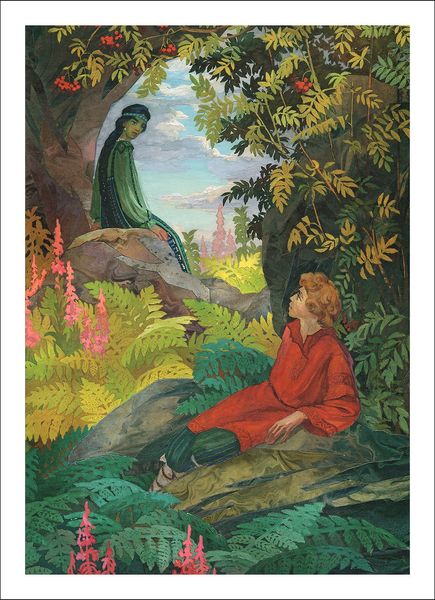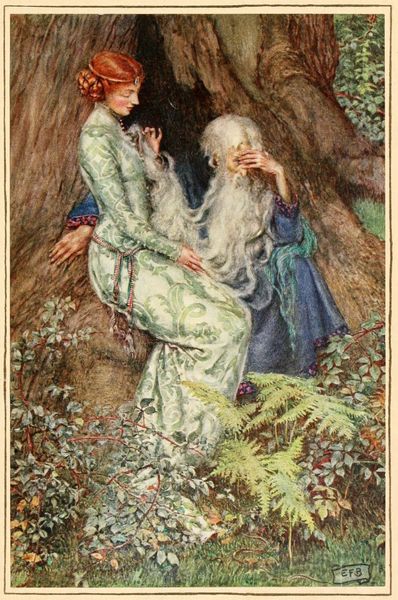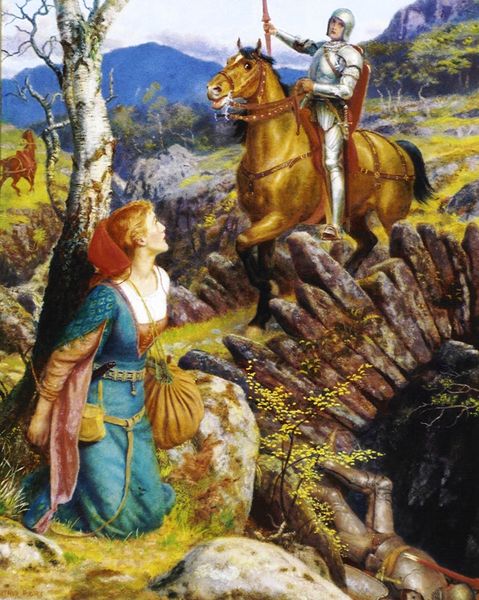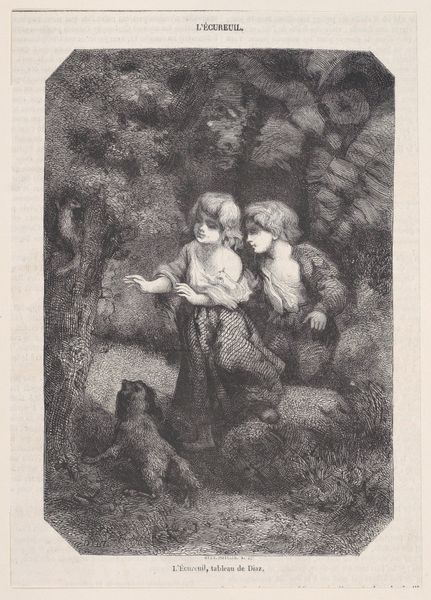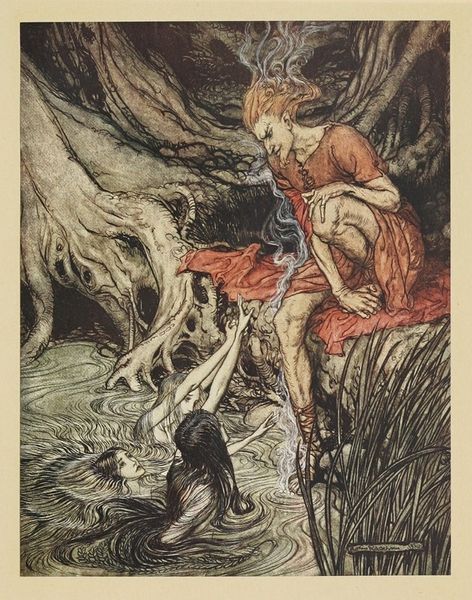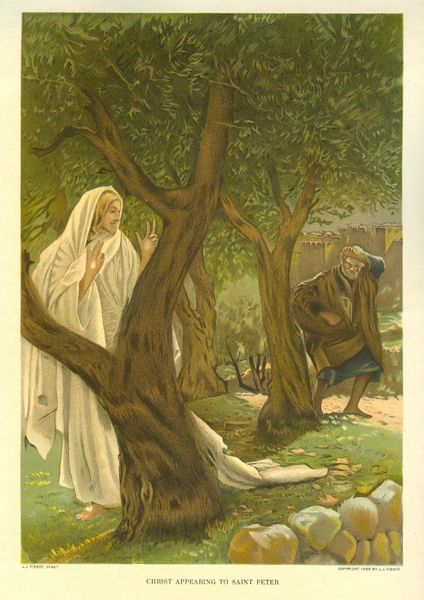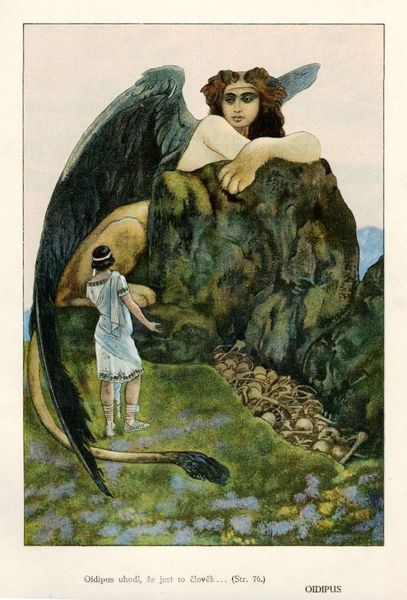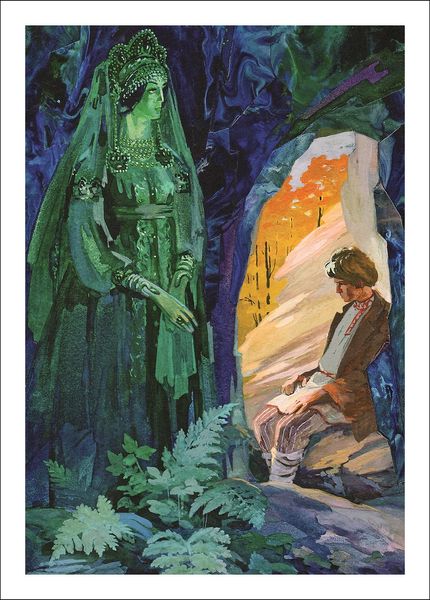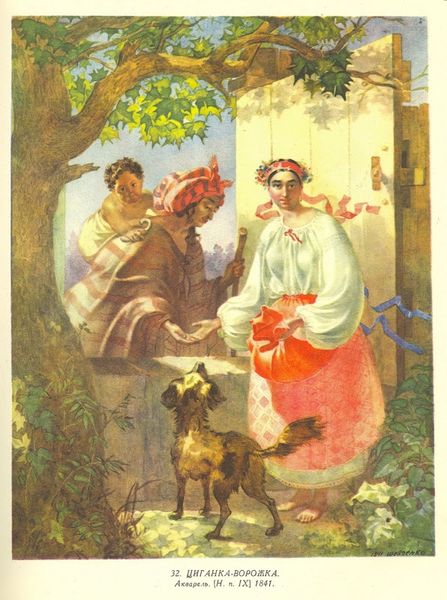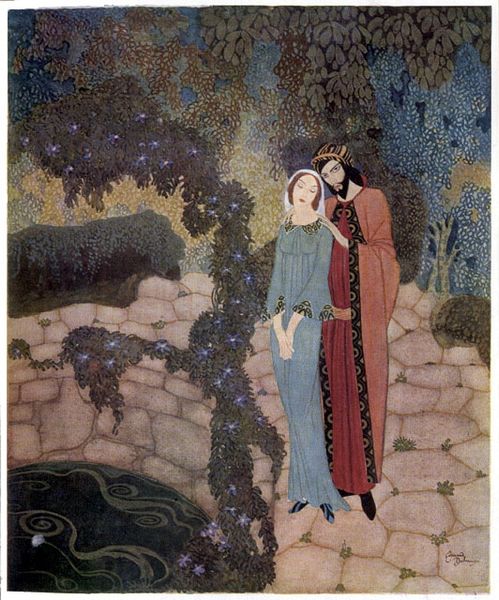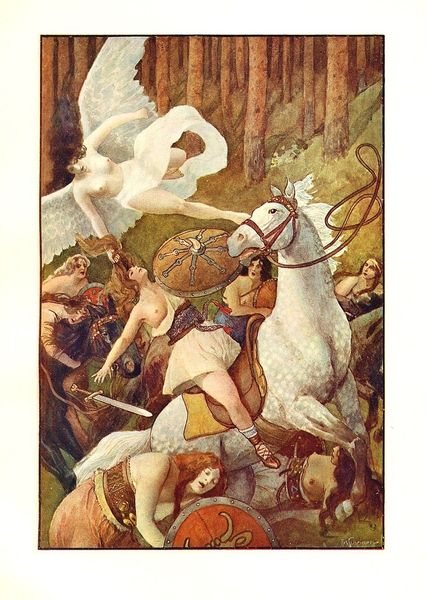
painting
#
fairy-painting
#
painting
#
landscape
#
figuration
#
symbolism
Copyright: Public domain
Editor: So, this is "Illustration for Vyšehrad" by Artuš Scheiner, looks like a painting of a figure with a bull's head interacting with a kneeling woman in a landscape. There's something really captivating about its almost dreamlike quality. What catches your eye when you look at this work? Curator: Well, let's think about this as more than just a depiction of a fairy tale. We need to ask, how was this made, and for whom? Scheiner was producing these illustrations in a time of rising nationalism and industrial printing. The image has this "high art" aesthetic, but ultimately, its existence depends on its ability to be mass-produced. What does that tell us about the role of art in shaping cultural identity at the time? Editor: So you’re suggesting that the image isn’t just *of* a folk tale, but is actually *doing* something, like helping to build a sense of national identity because it's reproducible? Curator: Exactly. And think about the materials used. The paints, the paper, the printing processes—all products of specific industrial systems. What would it have cost to produce and distribute such images, and who had access to them? This informs the kind of audience this nationalistic imagery could reach. Do you see this image reinforcing the social hierarchy or acting as a means for unifying people? Editor: I guess I hadn’t considered the economic factors of distributing art like this before, but that totally changes how I see the figures depicted and the role they may have played. I'm starting to understand how even fantastical images like this can be so deeply tied to the real world and the everyday labor that allows their circulation. Curator: Precisely. Considering the materials and the modes of production reveals so much about the social function of art.
Comments
No comments
Be the first to comment and join the conversation on the ultimate creative platform.
